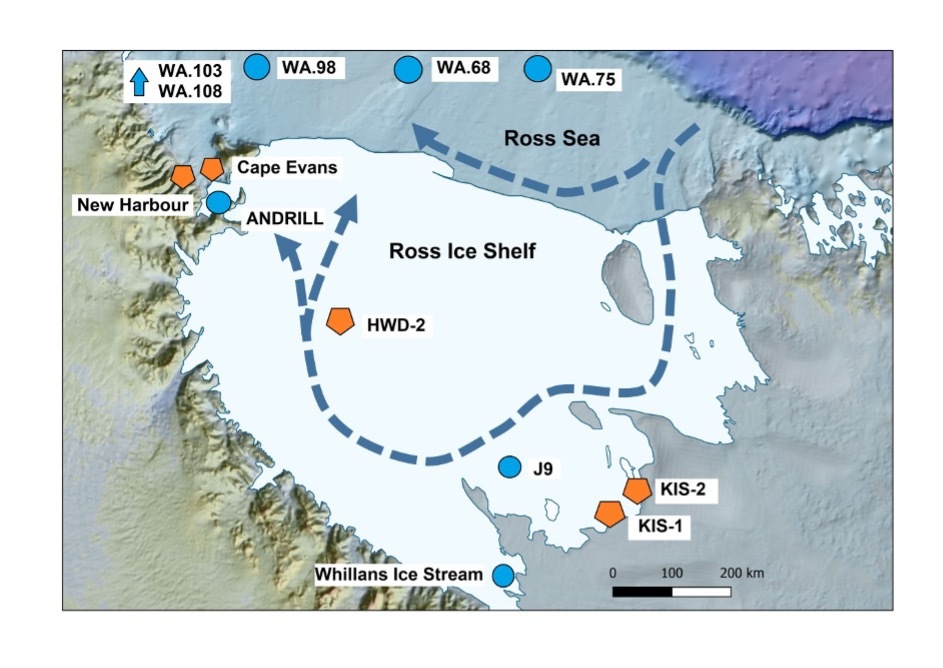
A microbial perspective of the Ross Ice Shelf
Very little is known about the ecosystem under floating Antarctic ice shelves. What microbial processes occur in this permanently dark environment? Dr Alexis Marshall aims to find out in this Opportunity Fund project.
Background
The Ross Ice Shelf is one of the world’s least studied environments, and the environment under floating Antarctic ice shelves is one of the most inhospitable on Earth. Hundreds of kilometres from the open ocean and under ice hundreds of metres thick, it is perennially dark and constantly at, or close to, the freezing point of seawater.
Despite this, evidence is beginning to emerge that these environments are home to functional ecosystems. Life in isolated under-shelf ecosystems is hypothesized to live independently of light-driven processes (e.g. photosynthesis), reliant on microbes that can draw energy from dark carbon fixation and lateral advection of food sources from external inputs.
Untargeted sequencing technologies are being used to study such environments. This approach analyses the total DNA of an environmental sample to reveal the genomic diversity present, and give insights into the functional potential of the microorganisms identified.
This project aims to leverage a world-first metagenomic dataset that traverses the extent of the Ross Ice Shelf. We will undertake the first baseline study of biodiversity under the Ross Ice Shelf, offering a snapshot in time that will form a comparative baseline for future biodiversity surveys. The data will enable a unique glimpse at an understudied and largely unexplored ecosystem that feeds into the Ross Sea region Marine Protected Area, and continue to improve our understanding of the impacts of future change on biological communities in this difficult to study ecosystem.
Research overview
A unique suite of water and sediment samples from sites in the ocean cavity underneath the Ross Ice Shelf (see map figure below) were collected and processed as part of large, national collaborative research efforts. Individually, each site provides important descriptive information on the resident biology from the Ross Sea underneath the Ice Shelf. Combined, they represent both incoming impacts from the external Ross Sea, potential land-based meltwater and subsurface intrusion, and the flushing of under-shelf water.
The sampled sites from the Ross Ice Shelf, Antarctica, are shown in the map below. Locations that represent new biological datasets generated within this study (orange pentagon) include Hot Water Drill Site 2 (HWD-2) and Kamb Ice Stream (KIS) Site 1 and Site 2 (KIS-2), as well as two external shelf sites that reflect the inflow of organic carbon-rich water to the shelf at Cape Evans (CE) and the outflow of oligotrophic shelf water at New Harbour (NH). Data from these locations will be compared to published sediment and water column biological datasets (blue circles) representing sediment microbial communities from the Ross Sea (WA.75-WA108 Learman et al., 2016; Garber et al., 2021; Currie et al., 2021) and close to the Ross Ice Shelf margin at ANDRILL (Carr et al., 2013), along with water column samples collected from HWD-2 (Martínez-Pérez et al., 2022), activity measures at J9 (Azam et al., 1979), and communities identified from subglacial lakes at the Whillans Ice Stream (Christner et al., 2014). The direction of the external Ross Sea current is depicted by the blue hashed lines.

Sampled sites from Antarctica's Ross Ice Shelf. Credit: Modified from Quantarctica.